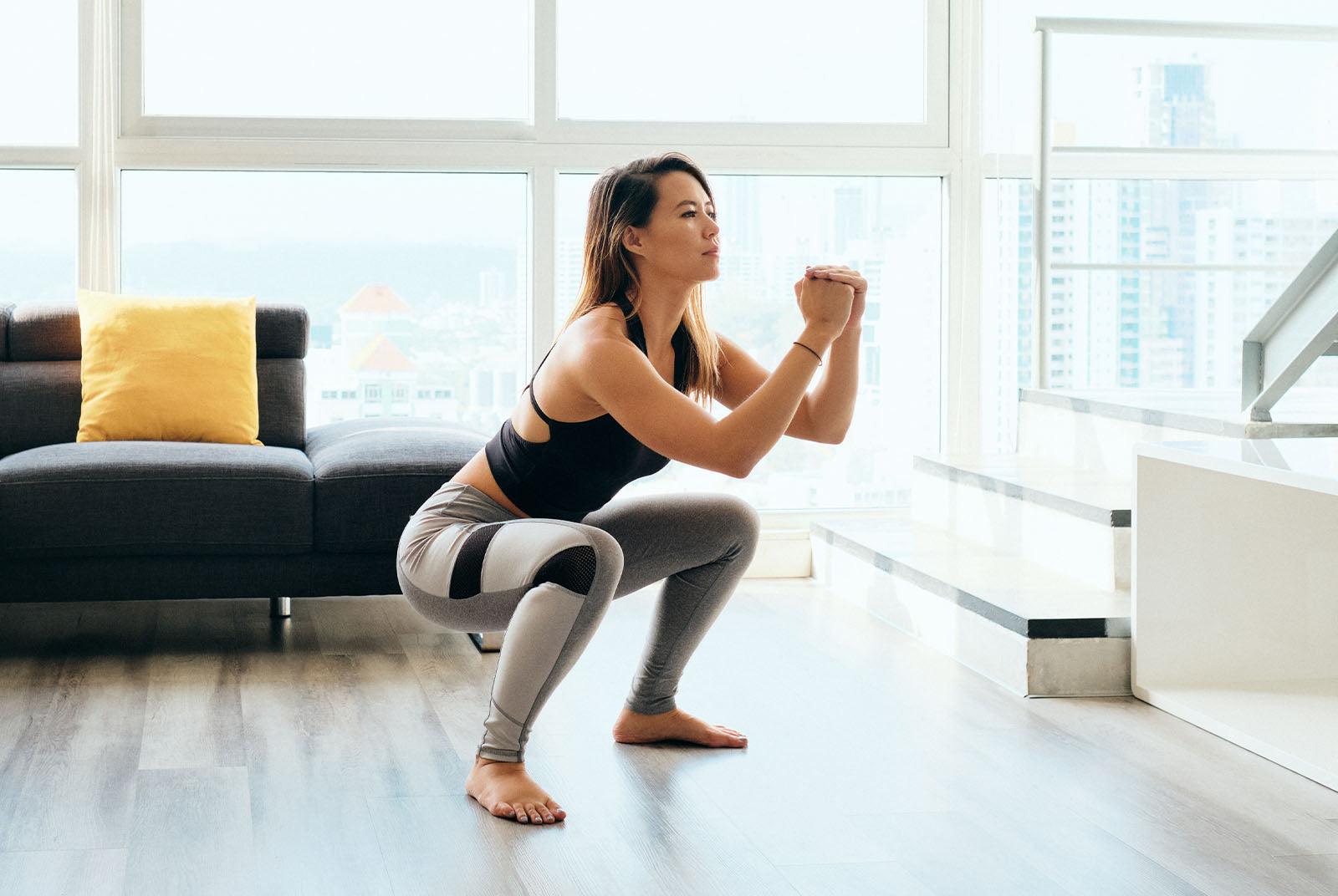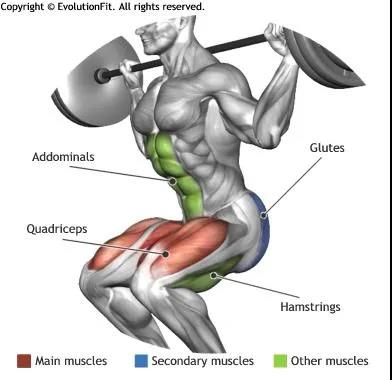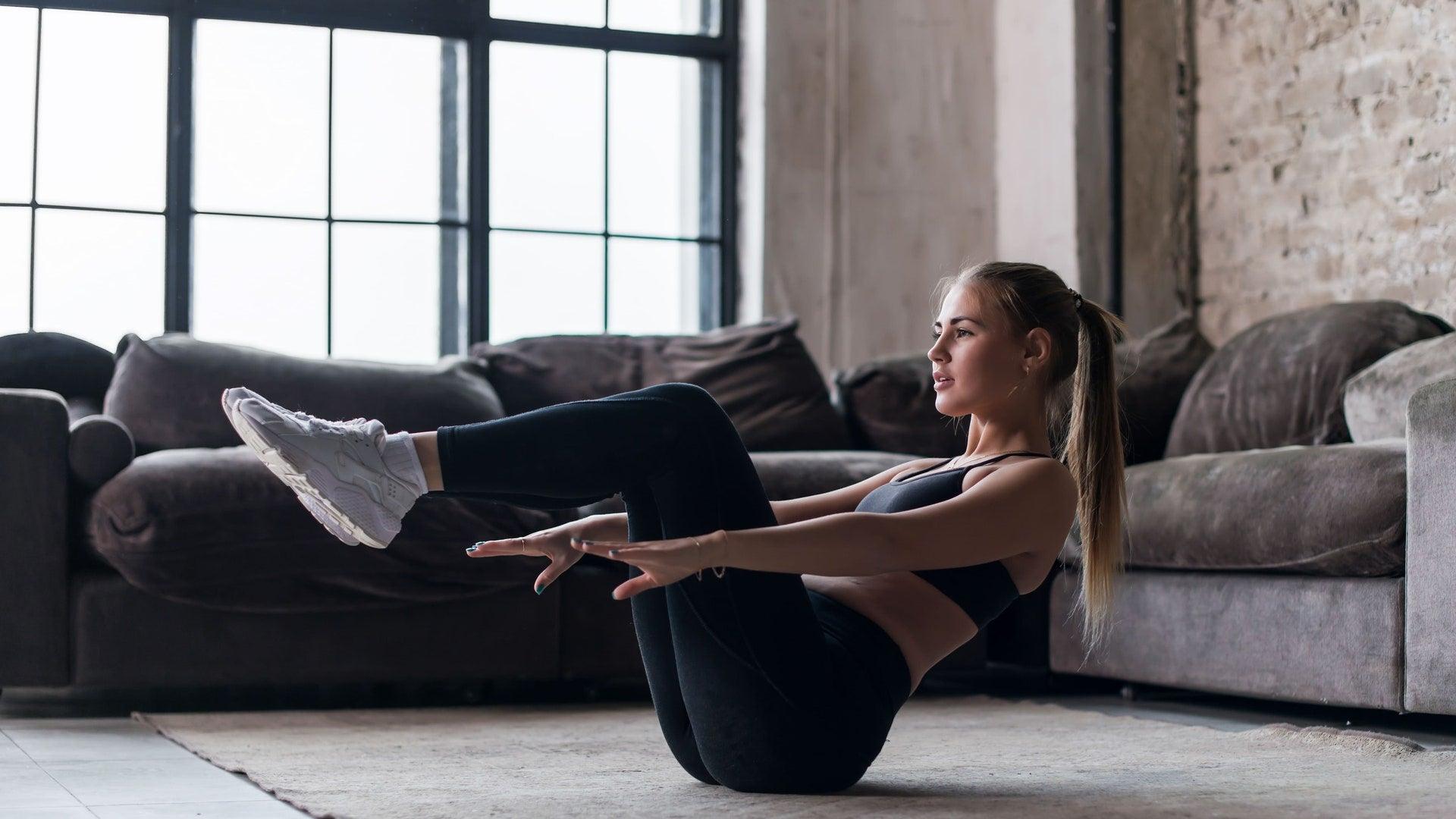
The Pain of Squat: the pain that more fitness people are experiencing
As an innate ability, squatting has become a missing jigsaw puzzle in modern life skills.
So that to realize Su BingTian’s strong gluteal and popliteal muscles is a beautiful aspiration of the public, as a sedentary lifestyle and stiff heels and shoes have changed the flexibility of arm and foot muscles, and ligaments in ordinary people.
Squats can be excruciatingly painful if forced.
From bobbi jumps and freehand squats in mass aerobics, to free workouts and barbell presses, to the increasingly popular butt and leg workouts, there is a pain in the body.
Even a lot of increased pathological symptoms can be found in squats, such as patellar tendinitis and arthritis can cause swelling and burning sensation in the knee when squatting.
In this article, we will focus on the common cause of squatting pain, and further provide enthusiasts and coaches with reference program regarding squatting pain prevention and improving the pain.

How the squatting pain come?
Squatting as a basic weight training movement, its safety is always controversial. A variety of external and internal causes can lead to squatting pain.
In terms of squatting positions, they are divided into incomplete squats (where the hips are above knee level) and full squats (where the arms are at or below knee level).
For years, the idea that both squats put too much pressure on the lumbar spine and knees, leading to injuries, has been around.
In a 2013 article published in Sports Medicine, it was concluded that squats with appropriate techniques will not increase the incidence of knee degenerative injuries. On the contrary, it is an effective exercise. But in the long run, incomplete squats may cause degeneration of the lumbar spine and knees.

In addition, if various pathological symptoms are not discovered in time, and still performing strength training such as squats, it will also bring pain and inconvenience:
- Patellar joint syndrome, also known as "running knee", can cause pain in the front of the knee when squatting.
- Patellar tendinitis, which causes pain at the bottom of the kneecap, and may also cause swelling or burning of the kneecap;
- Osteoarthritis, which can cause swelling, knee weakness, and popping or popping when moving the knee;
- Knee injury or trauma, local pain and swelling;
- Iliotibial band syndrome, pain in the buttocks and upper thighs.
The most common is the inability to squat normally due to restricted movement of the hips and ankles. The resulting hip and waist hypermobility and compensation, and therefore caused pain.
While the limited movement of the hips and ankles, in most cases, is due to the long-term sedentary brought by modern life and the wearing of tight shoes.

Sedentary life deprives the gluteal muscles of mobility and flexibility, and the hip flexors of the buttocks are shortened and hardened.
Moreover, wearing hard leather shoes and high heels for a long time makes the arch of the foot lack freedom, which makes the ankle unable to move and deforms the calf muscles, causing the knee joint to move forward insufficiently during squats.
Learn to squat properly before pain
The completion of squats is affected by many factors.
Anthropometrically, the longer the calf is relative to the thigh, the easier it is to squat. The relatively long torso/upper body also makes it easier to squat because it is easier to balance the center of gravity on the standing surface of your feet.

From the perspective of the hip joint, the depth, position and direction of the acetabulum, as well as the length and angle of the femoral neck can affect the completion of the squat.
But ignoring these innate factors, the completion of squats is mainly affected by the stiffness of the hips and ankles. These problems can be solved through proper exercise.
Improve ankle joint mobility through calf stretching exercises and arch stretching. Pay special attention to the area of the back of the calf and the front of the ankle, and improve the flexibility and mobility of the soft tissues, such as the ligaments and joint capsule of the ankle, through necessary regular exercise.
Furthermore, the gluteal muscles and hip flexors are very important in squats.
Pay attention to activating the hip trunk muscles (especially the psoas major) before adding weight to the squat, as it plays an important role in the completion of the squat.
For novices, you need to first understand the correct steps to squat. Gradually advance from bare-handed squats to weight squats:
- First stand with your back against the wall with your feet shoulder-width apart. Keep your heels about half a meter away from the wall, and try to keep the knee in line with your heels.
- Breathe deeply and squat down, exhale at the same time, sit down as much as possible, making sure that your knees are aligned with your heels;
- When standing up, tighten your core muscles and lean your back against the wall. Inhale and slowly raise to the original standing position. And be sure to push from the heel instead of the sole of the foot to ensure that the muscles of the back of the leg are used.
When you first start squatting, you may feel the typical burning sensation in your knees.
This is because some of the blood vessels in the legs are squeezed when squatting. However, with more frequent squat exercises, the body will react to this state, and form the collateral vessels.
After that, these blood vessels can provide oxygen-rich blood to the legs unhindered.
In the field of rehabilitation, squats also have an important role. Because they can hone stability while ensuring that all lower limb muscles are exercised without putting too much pressure on the tibiofemoral joint and anterior cruciate ligament.
However, after the knee has pathological problems, if the weight-bearing squat deadlift is forced, it may cause more serious knee joint wear.
For example, it is common in the knee joint effusion problem of fitness coaches. Due to long-term overtraining, various causes of abnormal function and morphological changes in the synovial membrane, resulting in joint swelling, pain, and dysfunction.
At this time, you must reduce excessive knee weight-bearing and flexion and extension activities, that is, reduce weight-bearing squats.
Knee extension is one of the easiest ways to exercise quadriceps while avoiding knee pain. It is also one of the safest exercises for flexibility, joints and tendons.
After the initial knee extension exercises, you can perform appropriate freehand squats, or use TRX assisted squats.
On the one hand, it can exercise the quadriceps muscles, strengthen the knee joint muscles and balance proprioception. Similarly, it can also improve the normal movement patterns of other sports, help protect the knee joints, and reduce the pressure on the knees.
In this way, the absorption of effusion can be promoted, and the exudation of knee joint effusion can be reduced.
To help you out further, you should also be careful when choosing activewear.
Comfortable leggings will provide you more support and prevent you from pain. The Training Mesh Leggings from WISKII Active would be an option for you. It is designed for extra comfy and flattering fit, moving with your body to support you. It is used as an aid to prevent pain in deep squats. With its help, you will get more protection for your body.

Squats can also relieve pain
As a commonly used training movement in exercise therapy, squats can largely solve some of the physical inconveniences that modern people face in daily life.
// Flexible knees and hips
For the first-time fitness novice, intensive spinning and battle rope whiplash are likely to cause injury.
This is due to the muscles, cartilage, ligaments, joint capsules and other structures that have not been active for a long time have not been sufficiently exercised. The cartilage layer and ligament devices become thinner and insufficiently lubricated, and the degree of calcification is getting higher and higher.
The long-term squat exercise can resist the natural degradation caused by this long-term placement. Let the knee and hip joints be activated in the entire anatomical range of motion.
// Strengthen weak hip and leg muscles
The radiation range of the muscle groups for squat exercises ranges from the main muscle groups being exercised sacral spine, gluteus maximus, quadriceps, and hind leg muscles; to the secondary muscle groups transversus abdominis, gluteus medius/gluteus minimus (outer Abductor muscle), adductor muscle, soleus muscle, gastrocnemius muscle.

The strengthening and shaping of the entire lower extremity reduce the risk of injury to the knee and ankle in sprains and collisions.
At the same time, squats can increase bone mineral density, it increases the strength of the spine and lower body bones to make the bones stronger.
Of course, for a lot of fitness, squats help shape the muscles of the legs and buttocks.
On the one hand, it is the main weapon for hips and strong lower limbs. At the same time, it can also help improve body posture and balance.
Therefore, for many elderly people, squats can help them prevent falls and even extend their life.

// Hemorrhoids prevention
There is a kink at the end of the digestive tract, and only when squatting, the muscles relax to ensure a vertical downward passage.
In 2014, in the German popular book Darm mit Charme, the author Giulia Enders also popularized an interesting point of knowledge.
She cited a study that compared the average duration of bowel movements between the two groups: on average, squatting is 30 seconds faster than sitting.
And then came to the conclusion that squats help prevent hemorrhoids. This may explain why squatting seems to be much more uncomfortable than sitting, but it has been popular in our country for many years.
Every bodybuilder must make peace with the squat, because it is not only a way to help break through advanced training, but also one of the tools to prevent pain and help the body rebuild basic strength and flexibility.



Leave a comment
This site is protected by hCaptcha and the hCaptcha Privacy Policy and Terms of Service apply.